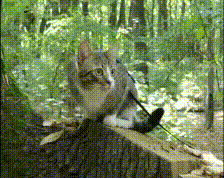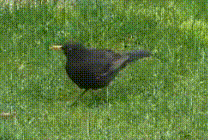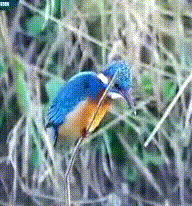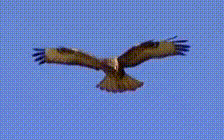THE VARIOUS MODES AND INTENSITIES OF SENSING
and their combined usage
Parent Page : The Practical Panorama
Animals have two ways of using their physiological senses – focused and panoramic, they can be used separately or together.
Focusing and panoraming are different experiences of how life actually happens. They are not opposites. Among animals they go hand in hand, like good friends dependent on each other.
Panoramic sensing doesn't lead to the same mental problems and it doesn't have the same creative potential that focused sensing has.
The Various Intensities of Sensing
There are many different degrees and qualities to panoramic sensing, just as there are with focused sensing. They can both be alert or absent minded.
Both can be receptive but only focusing can be creative. Focusing is what thinks and wants and does. Sometimes this creativity is associated with a panoramic experience. Panoraming will inevitably slowly lead to creative action but it could take centuries.
Focusing is passively absorbing with beautiful music, entertainment and a good comedy, or active when painting a masterpiece, calculating maths, or sport.
Then there's the blank fixed stare,.of Christmas shopping... devoid of any receptivity. At the other extreme, daydreaming is absent minded. While we daydream we often gawp vacantly into a ca. 90° empty panoramic space and passively focus on following the dream.
There must be elementary psychology books full of the subject.
On the other hand, there is almost no information on panoramic sensing.
The quality of panoramic visual awareness depends on the field of vision, horizontally and vertically. One of the problems of modern city life is the exceptional amount of horizontal stimuli, and many are designed to stimulate us to focus.
The other problem is modern noise. This effectively inhibits our willingness to listen-out.
When daydreaming, relaxed cycling or wandering in nature, we sometimes gaze at a ca. 90° panoramic area. This is passive, and usually absent minded.
Most humans have occasionally experienced an active panoramic connection with everything. It happens when we see wide landscapes, or look at the stars. It usually only lasts for a few seconds before we start focusing on something specific.
The full panoramic experience of simultaneously seeing and hearing numerous signals, is comparable with multi-tasking with its intense focusing on several specific but often isolated tasks in quick succession. Both are fully occupying and offer a sense of fulfilment.. Panoraming is far more relaxing.
Focusing and Thought
 When humans are on the lookout they scan their environment with focused selective attention.
When humans are on the lookout they scan their environment with focused selective attention.Domestic cats also scan their environment with focused attention. This behaviour seems to be rare among wild animals. It seems to apply to all cats, not just domestic cats.
Focused sensing is always selective and specific. Focusing among humans has been developing for thousands of years. It is especially useful for thinking.
Thought is almost impossible without focusing. Focusing is essential for constructive rational or analytical thought and for creative action.
We remember by focusing on specific memories. We can focus on several isolated ideas and then combine them. We learn by focusing, it can be very clever and creative. Focusing thinks, understands and gets things done.
Focusing with our brains on ideas, is probably the best thing we humans do.
Without focusing we would have no civilisation and no ability to understand ideas like these. If we'd only ever used our panoramic senses, we'd still be up in the trees.
We can focus on doing something, and think about something else at the same time. The challenge with focusing is to combine all the bits together, to coordinate our senses, minds, and bodies and to concentrate.
Focusing, even receptive focusing, always limits the big picture. To be able to sense everything, it is essential to stop all selective and specific focusing.
Panoramic sensing is useless for thinking, it's a far simpler way of sensing.
Panoramic Sensing
Panoramic sensing is the receptive awareness to everything happening in the immediate environment, without focusing on any specific part of it.Animals use their panoramic abilities to sense what is happening in their locality, especially any quick, sudden changes. Its primary use is to guard against danger – it makes life safe.
Panoramic sensing is an integral part of how animals manage to survive.  Watch how the blackbird, pulling at a worm, continually checks for danger. And hares ears are always poised, waiting for signs of danger while they're eating.
Watch how the blackbird, pulling at a worm, continually checks for danger. And hares ears are always poised, waiting for signs of danger while they're eating.
Vulnerable animals combine or alternate almost all of their focused activities with periods of panoramic sensing.
Even when dozing, animals maintain a panoramic awareness of the lights, shadows, sounds and scents around them.  The hare turns his ears outwards open for sounds, and sleeping birds keep one eye open.
The hare turns his ears outwards open for sounds, and sleeping birds keep one eye open.
When dozing it can be used for hours at a time, but then animals use it in a less intense manner, with the eyes at least half shut, and probably in combination with inner-body sense.
In order for animals to use their panorama senses in their purist form, it's essential for them to stop everything they are doing, wanting, and thinking – everything they are focusing on.
Pure panoramic sensing is useless for wanting, thinking, or doing – its usefulness is that it makes the things we want and do, safe.
However a few examples will be of general interest.
When hunting, predatory animals use panoramic seeing to watch over a limited panoramic area, and then look for specific changes within this area.
This activity is governed by focusing and wanting prey. Panoramic hunting is never absent minded, it is active desire. The intensity of panoraming heightens the chances of success.
 A kingfisher panoraming at a stretch of water is not interested in how the grass or leaves are moving. He watches over a limited area, waiting for ripples or maybe colours under the water.
A kingfisher panoraming at a stretch of water is not interested in how the grass or leaves are moving. He watches over a limited area, waiting for ripples or maybe colours under the water.
Notice how his head is kept still. This is for the same reason as vulnerable animals – if his head was moving, he wouldn't be able to see movements in the water.
 The same behaviour can be witnessed in a hawk hovering in strong wind looking for prey. They watch over an open field to look out for small brown animals moving, they ignore the cars passing by, and the sky around and above them.
The same behaviour can be witnessed in a hawk hovering in strong wind looking for prey. They watch over an open field to look out for small brown animals moving, they ignore the cars passing by, and the sky around and above them.
This behaviour is dominated by focusing on a specific idea within the panoramic field of vision.
Predatory sensing is very clever. It is further discussed in "Panoramic Hunting".
Question: Most birds have a sensitivity to ultraviolet light, a quick panoramic glance enables them to detect any life forms. I don't know how sensitive hawks, falcons, eagles, or kingfishers, are to ultraviolet light, and i don't know if fish reflect ultraviolet light. But i have to set limits to my academic research – this is a vast subject... and the practical use for humans is doubtful.
Peripheral Sensing
The English term 'peripheral senses' describes how humans use the panoramic senses – peripherally. This limited horizontal peripheral usage is typical when driving a car, it's subliminal... as soon as we see something we turn to focus on it.Humans often listen peripherally in this subliminal way, it isn't an astute searching and waiting for sounds, but it is able to consciously recognise significant changes.
The word 'peripheral' limits our imagination and understanding. Panoramic sensing is a far better way to describe their potential.
Panoraming and Sleep
I don't know how panoraming and sleep go together. While dozing vulnerable animals maintain a passive panoramic awareness. I can only imagine that it is even more minimal while sleeping.Birds sleep with one eye open. I may be wrong but they don't seem to have a dream state.
Panoraming and focusing are not opposites. Focusing is probably opposite to dreamless sleep. During the dream state, humans always seem to focus, but i don't know if this is just a reflection of normal focalised human activity. I haven't yet had a panoramic dream.
I don't know to what extent animals maintain any outward panoramic awareness while they are dreaming.
Dogs sometimes chase rabbits when they dream, but maybe horses have panoramic dreams... just as maybe hedgehogs dream of smells.
Cooking meat wakes a dog when it's sleeping, but would it wake them when they're dreaming of rabbits?
My knowledge runs out...
Back to Chapter One : The Animal Teachings
Back to THE PANORAMA SENSES Priority Pages